Located about halfway between the Cretan capital of Heraklion and the glorious coast town of Chania, idyllic Rethymno is kind of a smaller version of the latter: The same historic old town, a Venetian harbor, picturesque alleys, and fascinating Ottoman heritage make Crete’s third-largest city one of the most popular destinations for vacationers. But due to its favorable location, Rethymno is also the ideal place for a lovely day trip.

Rethymno
The town of Rethymno is located on a rocky peninsula and just like Chania, it has a rich history: Rethymno was founded by the Minoans who are credited as being the first high civilization in Europe. Later, it was occupied by the Romans, the Venetians, and most recently by the Ottomans.
Since Rethymno combines the charm of a historic old city with the proximity to traditional Cretan villages as well as some of the island’s most popular beaches, it receives a large number of vacationers. And indeed, if you are looking for the ideal base during your Cretan holidays, Rethymno might be the place for you. However, I experienced it only on a day trip.

Already in classical and Hellenistic times, ancient Rhithymna was a small yet prosperous town. Then, in the 16th century, the Venetians built a fortress on the western part of the coast. Parts of this Fortezza are still one of the city’s most significant landmarks.
Grand Tour of Historic Rethymno
Coming to Rethymno by public bus, you’ll alight at the main bus station in the western part of town. From there, you can get to the historic old town in about ten minutes.
Especially if it’s hot, you’ll enjoy crossing the large Municipal Garden. It was constructed on the site of the former Turkish cemetery at the beginning of the 20th century. The public park’s many big trees provide lots of shade so that you can rest’n’relax before or after exploring the historic old town or climbing uphill to the Fortezza Bastion.
Historic Old Town
Although the historic center of Rethymno is by far not as large as the old town of Chania and doesn’t have as my significant landmarks, there are various sights from the Venetian, Roman, and Ottoman eras of the city’s history.
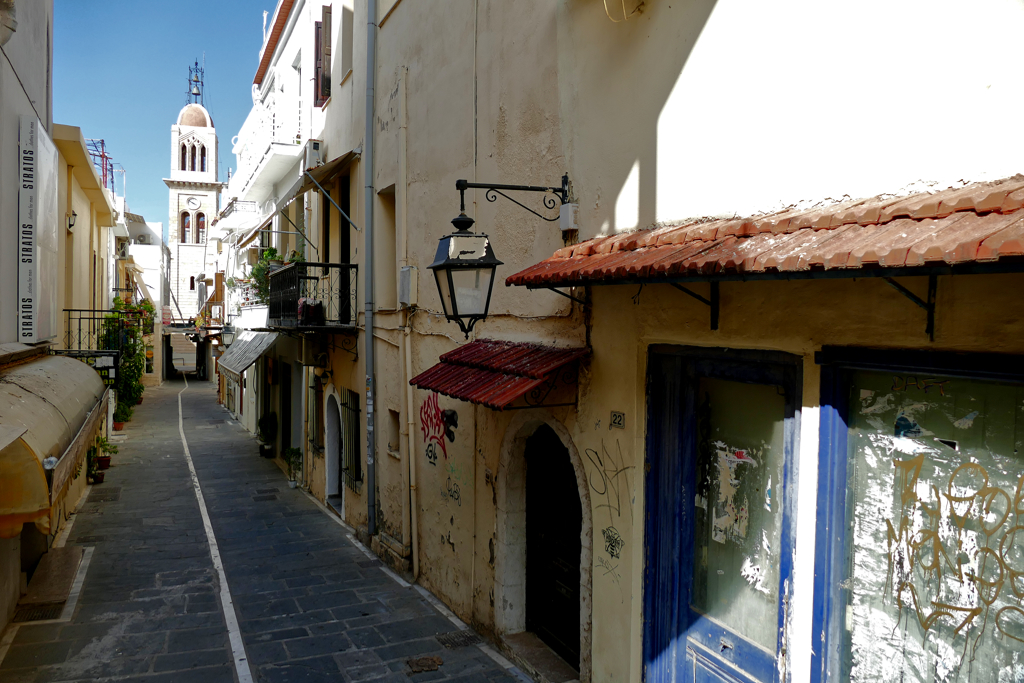
The old town, which is separated from the new part by the Megali Porta, the only surviving part of the former fortifications, is quite charming. There, narrow streets are lined by small shops and restaurants. If you should get lost in the web of alleys, don’t worry: Your point of reference is always the minaret of the Neradje Mosque.

I’m introducing Rethymno’s most important landmarks below. However, apart from exploring the rich history, you should enjoy some of the wonderful small cafés, the local food at one of the restaurants, and a couple of hours on the long sandy beach just east of town.
Porta Guora
The Porta Guora, also known as the Megali Porta, is one of the very few remains of the former city fortifications from the 16th century. It used to be the most important of the three gates of Rethymno. It divides the former Venetian old town from the newer part of the city.

The gate was built according to the design by the Venetian architect Michele Sanmicheli from 1566 to 1568. It was named after then-governor Jocopo Guoro and decorated with a gable adorned with the Venetian coat of arms flashing the lion of St. Mark.
Rimondi Fountain
Another grand reminder of the Venetian rule in Rethymno is the Rimondi Fountain. It stands at the northern end of Petychakis Square in the former center of town. Built already in 1588, only in 1626 it was named after the governor Alvise Rimondi who had the fountain renewed. This type of public fountain was crucial for a well-functioning town as it was an important source of fresh water for the inhabitants.
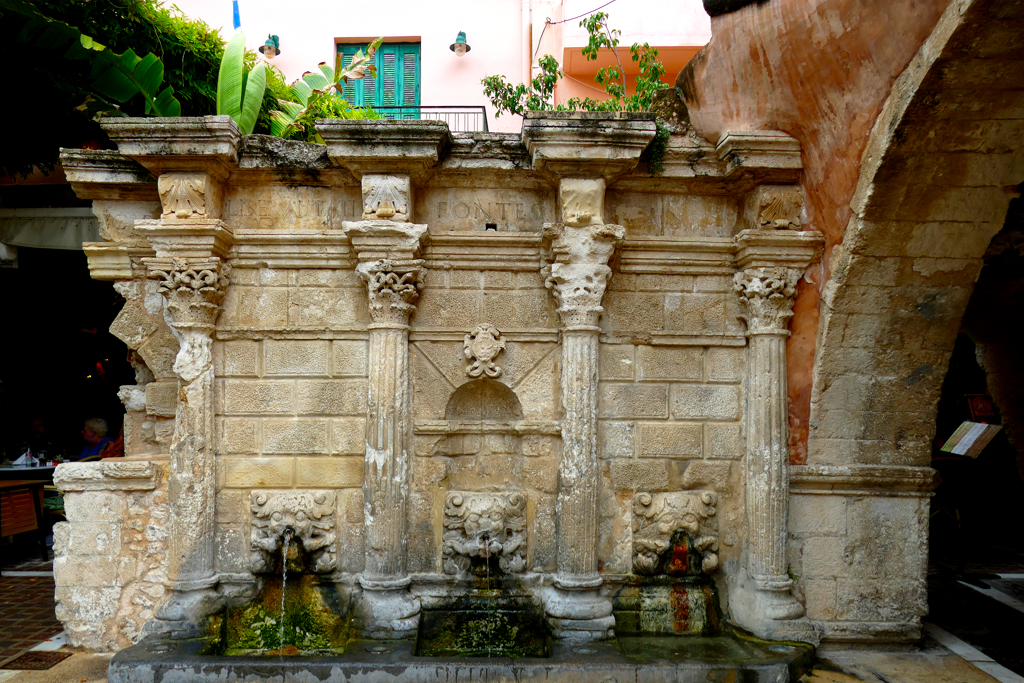
Water flows from the mouths of three lion heads into a basin. Those heads are flanked by four Corinthian columns. A dome that the Ottomans had built on top of the fountain was demolished during World War II.
Loggia
Not far from the fountain is the so-called Loggia. It is a representative edifice from the 16th century and served the Venetian upper class as a meeting place. It was constructed from large stone blocks. The whole building is like a gigantic cube with three round arches on each side. The initially open construction is now closed by glass fronts.
Today, the Ministry of Culture uses the loggia as a fancy gallery and showroom of artworks, including replicas of antique sculptures.
Neradje Mosque
The Neradje Mosque stems from the Ottoman era and was formerly known as Gazi Hüseyin Pasha Mosque.

Initially, the building housed a Catholic monastery of the Augustinian Order. After the conquest of Rethymno by the Ottomans in the 17th century, the monastery was transformed into a mosque. Engineer Georgios Daskalakishe built the minaret only during the last years of the Turkish rule in Crete in 1890.
Following the population exchange between Turkey and Greece in 1923 and since the departure of the Muslim population from Crete in 1924, the building houses a music school.
The Venetian Harbour
Another notable remnant of Rethymno’s Venetian era is the harbor, obviously. Although it’s not as impressive as the famous harbor of Chania, it is still the city’s most visible legacy of the Venetians. Many of the old buildings are listed as monuments. Many of them have restaurants on their ground floor. While the view is nice, these businesses are neither particularly good nor reasonably priced. To relish the harbor’s atmosphere, you can always enjoy a drink on their terrace and go for dinner elsewhere, preferably in one of the historic center’s narrow back alleys.
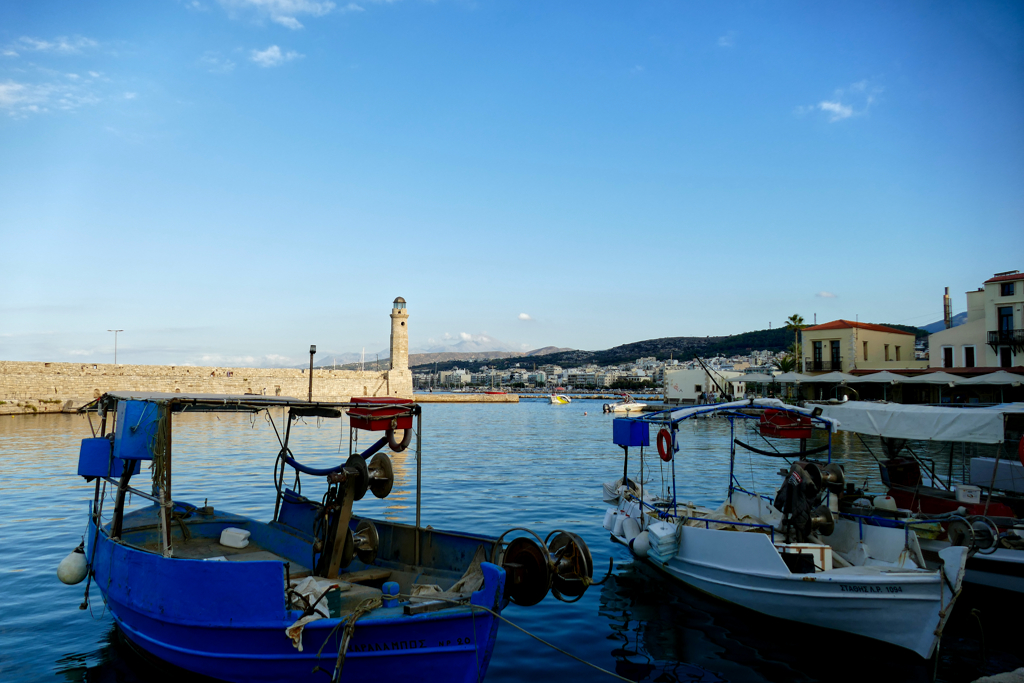
To this date, the old Venetian harbor is used as a fishing port. The best way to visit is by walking down the causeway all the way out to the old lighthouse. From there, you have a wonderful panoramic view of the harbor bay, the coast alongside Rethymno, and the open sea.
Fortezza Castle
The most significant structure the Venetians left in Rethymno is the so-called Fortezza. It was constructed in the aftermath of an Ottoman attack on the Paleokastro hill west of the old town. Initially, the plan was to move the entire town within these protecting walls. However, as there wasn’t enough space, this plan was never carried out. Yet, the Fortezza was a city within the city. Not only were there residential buildings and storehouses as well as administrative structures. They even constructed a church, and the bishop had his residence within the Fortezza, too.

After the Ottoman conquest, the Turkish occupiers used the complex, too, and even built a mosque on the ruins of the cathedral. The domed structure of this Sultan Ibrahim Mosque is – together with the remnants of the Cathedral of San Nicolo – one of the few structures on the premises that remains. The mosque’s minaret was demolished after the independence from the Ottomans.

In the southern part of the fortress, i.e. towards the interior, there is a small open-air theater where cultural events in summer attract both locals and tourists alike. There is an archaeological museum right next to the fortress, which houses the finds from the area.
You can visit the archeological site every day between 9 a. m. and 4.30 p. m. for a small entrance fee of 4 €uros.
Metropolitan Cathedral
One of Rethymno’s most notable structures is the three-naved Metropolitan Cathedral of Megali Panagia, hence, the Great Holy Virgin. As a matter of fact, only the middle aisle is dedicated to the Virgin Mary. The other two honor the Three Hierarchs respectively the Holy Apostles.

This church was completed in 1856. It houses important icons. The most notable one is the Virgin of the Passion. While the first bell is kept at the adjacent Rethymnon Church Museum, the one in the bell tower is only from 1899.
Rethymno Beach
A broad sand beach begins right on the city’s eastern outskirts and stretches alongside the turquoise waters for no less than 20 kilometers.
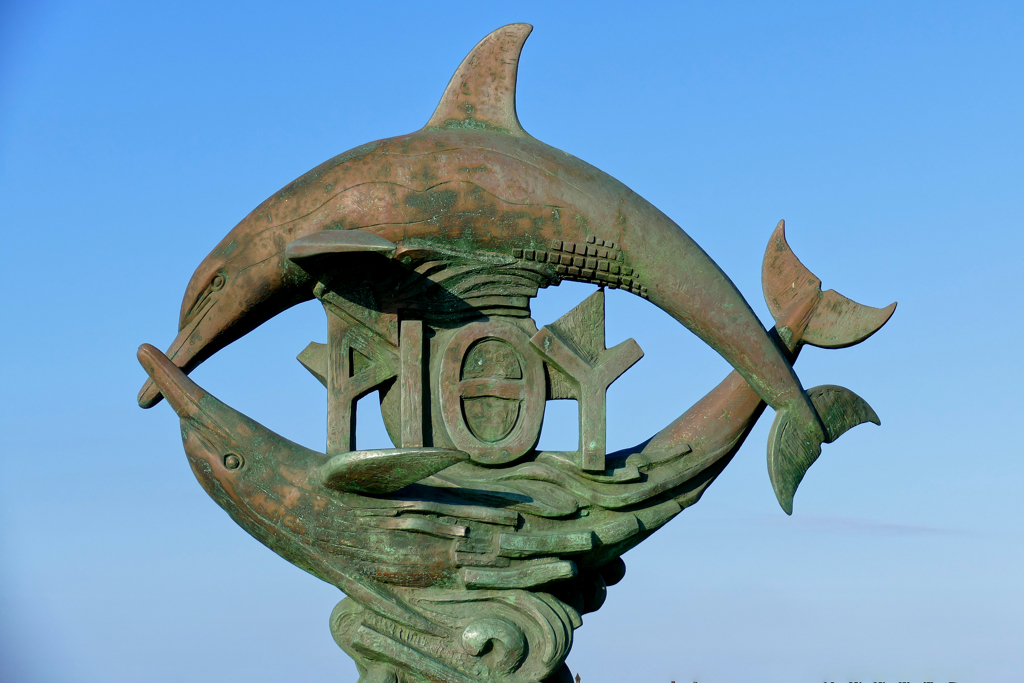
Obviously, swimming and sunbathing are wonderful. Nevertheless, since the beach is lined with resorts, hotels, and restaurants, it’s very busy and it’s not easy to find a rather secluded spot. Therefore, I actually prefer the more untouched bays around Chania, but that’s a totally personal preference. If you prefer the comfort of sunbeds, parasols, snack bars, and other facilities over serenity, you’ll simply love the beach of Rethymno.
Rethymno Or Chania?
Usually, I’m not a fan of comparing let alone grading all the different places I get to see. However, in this case, I’m willing to make an exception since Rethymno and Chania are structurally so similar: A historic old town, a Venetian harbor, beaches, tourist facilities – there are so many similarities that it is a valid question to ponder which town might be the better base for your stay in Crete.

Personally, I would opt for Chania without any hesitation. Although Crete’s second-largest city is busier than Rethymno and receives far more vacationers and day trippers, there is much more to see and to do. Also, I liked the beaches which are within walking distance from Chania much better than the beach of Rethymno. This, however, totally depends on your personal taste: While Chania’s beaches are rather cozy small bays, Rethymno has this long and broad sandy beach. Many people might actually prefer it.
Below, I wrote down all the info visitors to Rethymno might find useful – whether they are staying for a longer period of time or whether they are paying the town only a brief visit on a day trip.
Practical Information
How to Get There
By Plane
Rethymno has no airport, the closest one is on the outskirts of Chania.
If you haven’t booked a package where the travel company arranges the shuttle from the airport or jetty to your hotel, you have different options for how to get to your final destination. The most comfortable option is taking a cab, obviously. To the city center of Rethymno, the ride will take between 45 and 60 minutes and will set you back about 85 €uros. Nevertheless, don’t forget to clearly agree on the fare with the driver before you board his cab.

Obviously, you save lots of money by taking the public bus. For as little as 7.30 €uros, the coach shuttles visitors comfortably between the airport and Rethymno’s main bus station. However, currently – as of May 2023 – there are only four direct buses per day, you can check the hours on this timetable. Also, keep in mind that the trip will take up to two hours.
A more flexible yet even longer alternative is to connect at the main bus station of Chania as buses in both directions go much more often.
I’m not driving, but if you do, you can rent a car right at the airport and off you go.
By Bus
You can reach Rethymno by public bus from Chania or Heraklion. To get to Rethymno from Heraklion takes 90 minutes and costs 8,30 €uros while from Chania, it takes 60 minutes and the fare is 6,70 €uros. Public buses in Crete are run by KTEL company and you can find the bus schedule online. You can easily buy a ticket when you are in Crete. There is no need to book online.
In general, bus connections are very punctual. However, a minor accident or a breakdown can always occur, hence, I wouldn’t travel on a tight schedule. For instance, if your flight or ferry leaves from Heraklion, add an additional two to three hours to your itinerary. If you get there too early, who cares? In Crete, you’ll always find something to do to fill those extra hours with joy. What’s definitely not enjoyable is watching your flight taking off without you.
Obviously, there are only a few – sometimes even only one – connections to more secluded places. However, if you are halfway organized, you can still easily explore major parts of the island by bus. Nevertheless, in the off-season during the winter months, some connections to secluded places might be suspended.
I visited many places around Crete comfortably by public bus. Nevertheless, as schedules are subject to change, I’d recommend checking the bus company’s comprehensive website. Also, the people at the KTEL bus station in Chania are quite helpful. You have to get your ticket in advance before boarding the bus as you cannot buy tickets from the driver.
By Ferry
Ferries run daily between Athens‘ port of Piraeus and either the port of Souda just six kilometers east of Chania or the port of Heraklion.

Depending on which company respectively type of ferry you choose, the trip takes between 6.5 to 8.5 hours and costs around 50 €uros one way. Keep in mind that the trips are always night cruises: You leave around 9 or 10 p. m. and get to your final destination in the wee hours.
Yes, the trip is quite cheap but it can also be a real drag.
You can also go to Santorini or any of the other Cycladic islands like Mykonos or Naxos from the port of Heraklion.
How to Get Around
There are local buses in Rethymno, however, they are not easy to figure out. While the bus company KTEL publishes the intercity connection, you won’t find timetables for the local connections there. Sadly, you won’t find them on google maps either. Obviously, you can always inquire about specific connections at the main bus station.
Where to Stay
Crete has been a popular tourist destination for decades with Rethymno being one of the most popular places.
However, if you don’t like either of these accommodations, you can check out the availability and prices of other great lodging options on this map*:
Booking.comWhat to Eat
After having spent a couple of weeks in different places around Greece, I’d argue that the country in general is not a destination for self-proclaimed gourmets. There are tons of food everywhere. However, the classic cuisine is intended to fill you up and is definitely not refined. Also, Greeks prefer their food to be lukewarm, and that’s how they serve it in the taverns.
In most restaurants that cater to tourists, you’ll find all the dishes you know from your Greek restaurant back home: Gyros, Souvlaki, Bifteki, and the like. All very much on the meaty side. As a vegetarian, you’ll probably stick to Greek or Creten salad day in and day out.
Nevertheless, I need to point out that, being based in Germany, Greek food is by no means special to me. In Germany, every forlorn hamlet has a German pub and an authentic Greek restaurant run by real Greeks. Therefore, I don’t associate all those aforementioned dishes with vacations in Greece. But if for you that’s the case, I’m happy for you and please forget all my critique and immerse yourself in heaps of grilled meat; opa!

This being said, I’m glad to announce that Rethymno was one of the places in Crete where I was served the best food. Apart from traditional taverns, a popular category of restaurants are the meze places around the Neratze Mosque. Meze are various small appetizers usually shared with your whole party. Many locals prefer these restaurants for the relaxed atmosphere and the low prices.

According to my experience, restaurants in the small alleys of the old town tend to be better than those alongside the Venetian harbor or the beachfront.
Organized Trips
Yes, you can get to most of the major day trip destinations like Elafonissi, Samaria Gorge, and the ferry port for Gramvousa Island by public buses. Howsoever, since it’s not always that easy to organize your day trip in a foreign country in a language that you cannot even read properly, I highly recommend going on these trips organized. You’ll see that at the end of the day, the price difference is not that big and it’s a good feeling to know that there is someone there for you in case you need assistance. Also, exploring Crete from the water is a very special experience that you can book only organized.
Here you can check out some of the best tours to join during your trip to Crete*:
Cash And Cards
Since 2001, 20 European countries are paying with €uros, and Greece is, obviously, one of them. The exchange rate is 1 US$ = 0,92 EUR (May 2023), but you can check the conversion on this page.

Especially due to the Covid pandemic, even small businesses prefer that you pay by credit card, and preferably contactless.
However, I was also asked if I could pay cash – even for hotel rooms. Obviously, this makes business for locals more profitable, if you know what I mean. In return, they made me a slightly better price.
Language
The Greek language had an immense impact on the development of Europe. Both the Latin and the Cyrillic alphabets were developed on the basis of the Greek alphabet. Also, the New Testament was written in classic Greek and is still read in the original version during Greek church services. Only the fall of the Byzantine Empire in 1453 marks the end of the Medieval Greek period.
This is when the era of today’s version of the Greek began.
To this date, scientific terms stem directly from classic Greek – and Latin, obviously.
Although Greek is such a significant language, not many foreigners speak it. But basically, all Greeks working in tourism and gastronomy speak quite decent English. However, it’s always nice to be able to say at least some pleasantries in the local language so you might want to pick up some words for instance on Lingohut. This online program offers an amazing choice of more than 45 languages!
By the way, in general, menus, timetables, street signs, and other important information are written in both Greek and Latin letters. Nevertheless, to make things easier for you, below is a list of Greek letters and their respective translation.
Greek Alphabet
| Upper Case Letter | Lower Case Letter | Greek Name | English Name |
|---|---|---|---|
| Α | α | Alpha | a |
| Β | β | Beta | b |
| Γ | γ | Gamma | g |
| Δ | δ | Delta | d |
| Ε | ε | Epsilon | e |
| Ζ | ζ | Zeta | z |
| Η | η | Eta | h |
| Θ | θ | Theta | th |
| Ι | ι | Iota | i |
| Κ | κ | Kappa | k |
| Λ | λ | Lambda | l |
| Μ | μ | Mu | m |
| Ν | ν | Nu | n |
| Ξ | ξ | Xi | x |
| Ο | ο | Omicron | o |
| Π | π | Pi | p |
| Ρ | ρ | Rho | r |
| Σ | σ,ς | Sigma | s |
| Τ | τ | Tau | t |
| Υ | υ | Upsilon | u |
| Φ | φ | Phi | ph |
| Χ | χ | Chi | ch |
| Ψ | ψ | Psi | ps |
| Ω | ω | Omega | o |
Connection And Communication
Since June 2017, no roaming charges apply within the EU with a European mobile phone contract. This applies to all 27 countries of the European Union as well as Great Britain, Iceland, Liechtenstein, and Norway. It pertains to all contracts.
When roaming is unavailable, you can connect to the internet at basically every museum, eatery, and hotel.

You can get a SIM card if you insist on being online 24/7. The most popular ones are from COSMOTE, Vodafone, and WIND. You can get them for 5 €uros in their respective stores.
In Greece, they use plug types C and F. Their voltage is 230 V, and the frequency is 50 Hz. Whereby, as nowadays all these chargers have integrated adapters, in general, the voltage and frequency don’t really matter.
By the way, you’ll find comprehensive travel info in my post World’s Most Complete Travel Information – an indispensable globetrotter-classic.
Rethymno was just one of the beautiful places I visited during my trip to Crete. To read about other amazing places on the island, go to this post and take your pick!
Map
On this map, you can see where all the wonderful places I’m introducing in this post are located. This way, you can plan your itinerary accordingly.
Clicking on the slider symbol at the top left or the full-screen icon at the top right will display the whole map including the legend.
Pinnable Pictures
If you choose to pin this post for later, please use one of these pictures:






Did You Enjoy This Post? Then You Might Like Also These:
Best of HERAKLION – Your Perfect Base in the East of Crete
Day Trip to AGIOS NIKOLAOS – Crete’s Easternmost Gem
A Self-Guided Bus Tour to Naxos’ 5 Most Beautiful Mountain Villages
Day Trip to RETHYMNO
Best Things to Do in CRETE in One Week
BALOS and GRAMVOUSA – Crete’s Most Excellent Beaches
NAXOS – Five Best Things in Five Days
The Best and Most Beautiful Beaches of Naxos
* This is an affiliate link. If you book through this page, not only do you get the best deal. I also get a small commission that helps me run this blog. Thank you so much for supporting me!
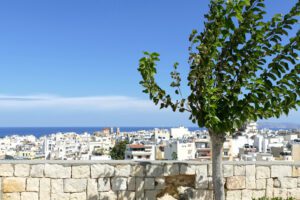
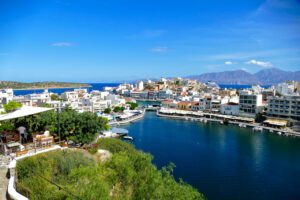






Rethymno does look like a great spot for a day trip. Or maybe a smaller spot to stay than similar Chania. We would certainly want to see the more popular spots. Such variety in the sights you visited. But we would not miss the chance to enjoy the small cafes and lounge on the beach. Fascinating to see the Neradje Mosque. Especially illuminated at dawn. Good to know it has been put to good use.
Yes, it is significantly smaller than Chania. But all in all, it’s difficult to say which one is more convenient especially for a longer stay.